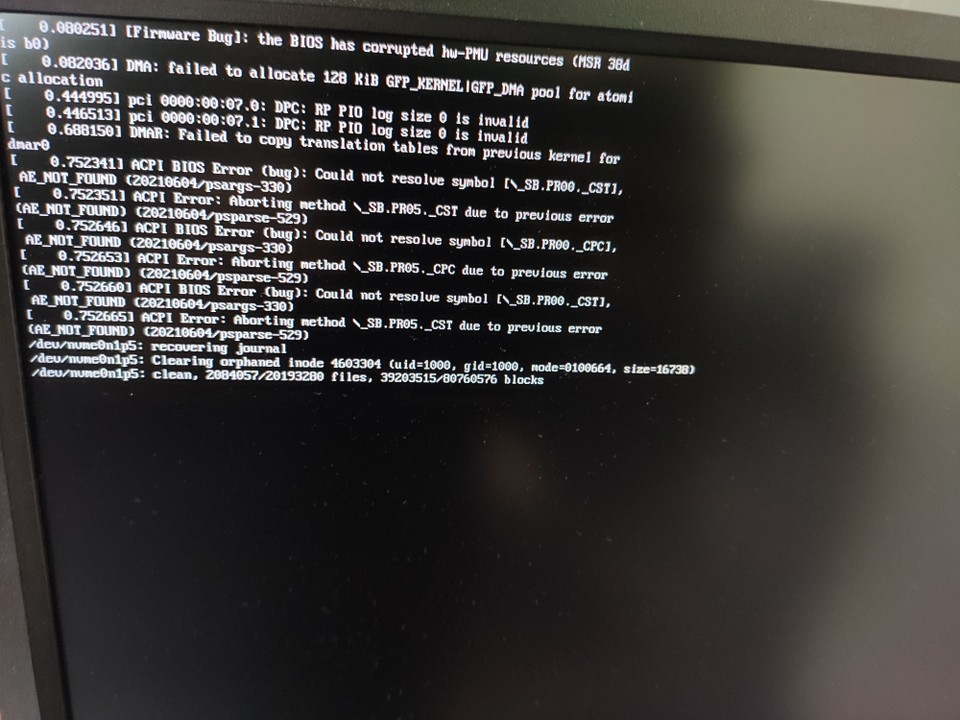Panic the Kernel!! 🙀
— lkmp, linux, kernel, panic — 1 min read
Hallo Robots o/
I was feeling a bit adventurous today so I wanted to go ahead and try to panic the kernel. I mean, the Linux Kernel is so robust that I have never seen it panic until now in normal day to day usage, but I am wondering what does it look like when kernel does panic 🎃
NOTE: Running the following codes, WILL CRASH YOUR SYSTEM. An easy poweroff poweron should fix it though :)
There are two way that I was able to figure out, which can help us panic our kernels.
1. Using panic() from a custom kernel module
In this approach, we will create a custom kernel module and use the kernel's
panic() function to panic the kernel.
1. Set things up
1mkdir panic-module2cd panic-module3touch panic.c Makefile2. Create the custom kernel module
1/*2 * panic_module.c -- A Kernel module that panics the kernel3 */4#include<linux/init.h>5#include<linux/module.h>6#include<linux/panic.h>7
8static int __init panic_module_init(void)9{10 printk(KERN_INFO KBUILD_MODNAME ": Panic Module Init.\n");11
12 /* Panic the kernel using the panic() function */13 panic("panic_module: Kernel panicked due to panic().\n");14
15 printk(KERN_INFO KBUILD_MODNAME ": Panic module: %d\n", y);16
17 return 0;18}19
20static void __exit panic_module_cleanup(void)21{22 printk(KERN_INFO KBUILD_MODNAME ": Panic Module Cleanup.\n");23}24
25/* Register the module */26module_init(panic_module_init);27module_exit(panic_module_cleanup);28
29/* Information regarding the module */30MODULE_LICENSE("GPL");31MODULE_AUTHOR("Naveen Naidu");32MODULE_DESCRIPTION("A Kernel Module to panic te kernel");3. Create our Makefile
1obj-m := panic_module.o2KDIR := /lib/modules/$(shell uname -r)/build3
4all:5 $(MAKE) -C $(KDIR) M=$(PWD) modules6clean:7 $(MAKE) -C $(KDIR) M=$(PWD) clean4. Time to panic the kernel
Now that we have everything set up, let's go panic the kernel :D
WARNING: DOING THE FOLLOWING WILL CRASH THE KERNEL, SAVE EVERYTHING BEFORE TRYING Restarting the system will fix everything :)
1cd panic-module2make all3sudo insmod panic_moduleTADA! Your kernel has crashed :P
2. Panicking the kernel using CONFIG_PANIC_ON_OOPS
I was wondering if there were any other ways using which we could panic the kernel.
After a bit of creative searching :P, I figured that kernel has a configuration option called as CONFIG_PANIC_ON_OOPS which will panic the kernel whenever any OOPS happens.
So I was wondering, if we switch on these options, and make our panic-module.c
file create an OOPS instead of using the panic() then we can cause the panic.
And guess what! That does indeed work \o/
But! Note that for this to work, you would have to compile the mainline kernel
with CONFIG_PANIC_ON_OOPS_VALUE=1 and CONFIG_PANIC_ON_OOPS=y and boot into
that kernel and then load the following module.
This is a very time intensive work though :(
But for the highly motivated, I'll still provide the updated panic_module.c
file :)
1/*2 * panic_module.c -- A Kernel module that panics the kernel3 */4#include<linux/init.h>5#include<linux/module.h>6#include<linux/panic.h>7
8static int __init panic_module_init(void)9{10 printk(KERN_INFO KBUILD_MODNAME ": Panic Module Init.\n");11
12 /* Panic the kernel by dereferencing a NULL pointer.13 * Note that, this would only cause an OOPS. To panic the kernel on OOPS14 * you would also have to set `CONFIG_PANIC_ON_OOPS=y` and set the15 * `CONFIG_PANIC_ON_OOPS_VALUE=1`.16 */17 int *p = NULL;18 int y = *p;19
20 printk(KERN_INFO KBUILD_MODNAME ": Panic module: %d\n", y);21
22 return 0;23}24
25static void __exit panic_module_cleanup(void)26{27 printk(KERN_INFO KBUILD_MODNAME ": Panic Module Cleanup.\n");28}29
30/* Register the module */31module_init(panic_module_init);32module_exit(panic_module_cleanup);33
34/* Information regarding the module */35MODULE_LICENSE("GPL");36MODULE_AUTHOR("Naveen Naidu");37MODULE_DESCRIPTION("A Kernel Module to panic te kernel");Once you make the above module using the Makefile provided in the Approach 1, and insert the module. You'll observe something like the following:

That's it for now folks!
:wq